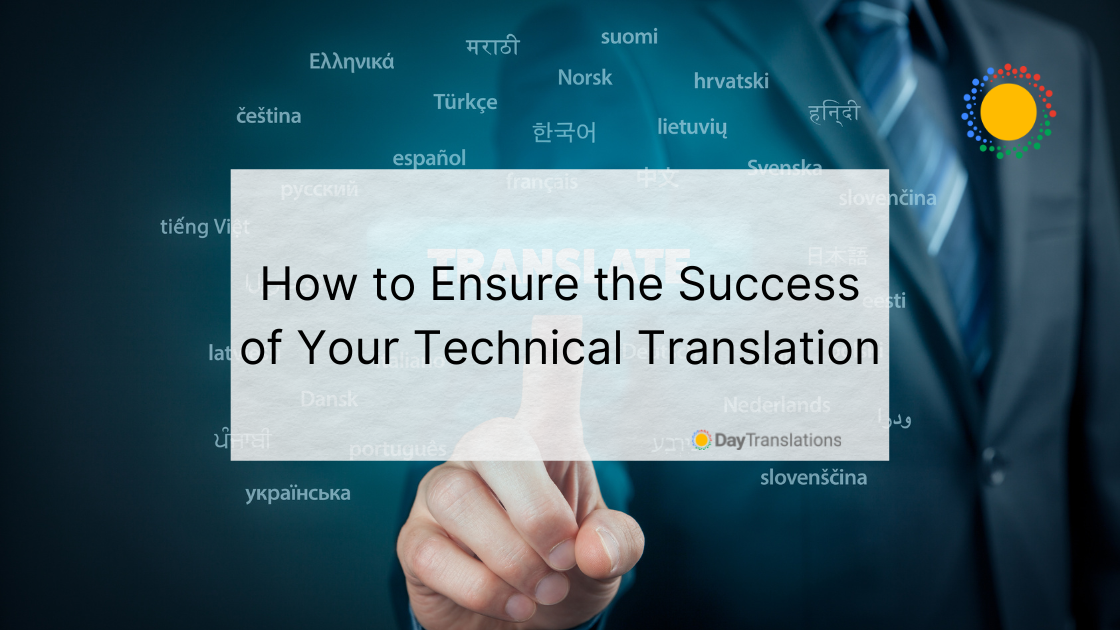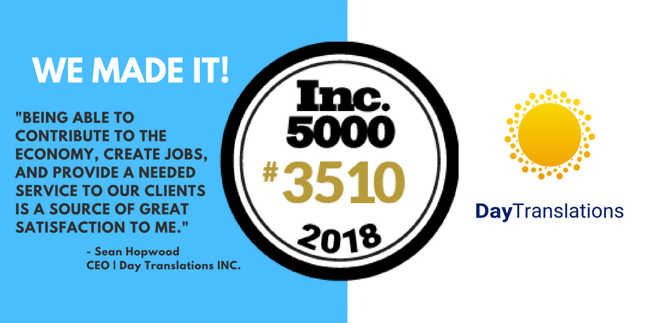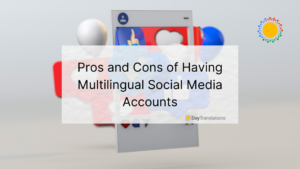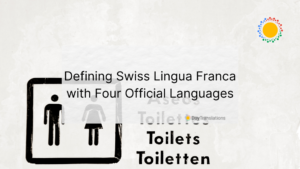Technical writing is very particular and requires accuracy and preciseness, in the same manner that technical translations should be specific. As more companies pursue a global presence for their services and products in different parts of the world, there is a high possibility that the global strategy of the management team might require the translation of technical and support documents in different languages.
For communications managers, publishers and technical writers, there are some steps you can take to ensure that you maintain the high quality of the technical documents in preparation for technical translation.
Preparing technical documents for subsequent technical translation
It is vital for the success of the technical translation to be prepared ahead of time. This means gathering related materials, references and other details that will help the technical translator later.
-
Plan ahead
Spend a few hours to think how the technical writing should be done carefully. It will be greatly beneficial to the technical translation later. Ensure that you collaborate with an expert technical translation services provider. When preparing the documents to be translated, see to it that these are fully editable. Do not submit PDF files to the translator. This ensures that the translator will have space for varying text lengths that are common in most foreign languages.
It is better if you also prepare the glossaries, terminology, image and product descriptions and past technical translations as references to help the translator. Translation deadlines are sometimes very tight. Because of this fact it is always good to prepare the materials ahead of time as it helps to ensure the accuracy of the technical translation. Everyone concerned will have the time to review the document before its release properly.
-
Determine the target audience
It is always important to determine who will be reading the translation and when. Different markets have different prerequisites and requirements. Likewise, it is important to determine the end user, because the tone of the language and the terms to be used should fit the persons who will be using the technical translations.
If the technical translations are occupational safety guidelines for employees or product assembly instruction for users, the terminology will be different. The translator should be aware of these details to ensure that the user could clearly understand the translation.
Because of the nature of the content, the instructions should be precise, based on the reading level and comprehension of the target audience. These factors determine the quality of the final translation. For companies with tight budgets, you can reduce the amount of text. You can replace complex technical descriptions with graphics. You may be able to cut more of the content based on the target audience.
-
Determine the purpose of the content
Aside from defining the target audience, it is also essential to determine the purpose of the translation of the technical document. You have to define what the translation should accomplish. Define whether the technical translation is needed for international sales or the promotion of your brand. It is likewise vital to determine if the translation is a critical document and if it is going to be frequently read. Another important consideration is its publication. Is the technical translation to be published online or printed?
Most people avoid lengthy texts and instructions, thus it is critical to define who will read the document, when it will be read and how it is going to be read. Moreover, the purpose and nature of your content provide the translators with the guides for translation.
When your technical content and the background information are finalized, you can find the right translator for the job.
Finding the right technical translator
The nature of your document dictates that you find a translator who specializes in the particular technical field. Technical translation belongs to a niche market and requires someone who is not only skilled in the source and target language. The translator should be a skilled writer who is a specialist in a specific field as technical translation is as complicated as technical writing.
It is essential that you choose a technical translator who continuously updates their knowledge in their field of expertise. For the success of the technical translation, it is a good idea to provide the translator with the list of deliverables and your expectations. The deadline is critical. Moreover, see to it that the translator is qualified to handle the project and has the credentials and certification, as well as samples of previous works. Expect a higher price tag for technical translation.
A certified translator may or may not be needed to handle your technical translation requirement, although the certification gives you more assurance that the work will be professionally done and according to the specifications you have set.
Further, the specialization of the translator in a particular technical field gives you additional benefits. You benefit from the accumulated sources of references of the translator, his/her expertise that is regularly updated and the tools and dictionaries that the translator possesses.
Provide answers to the translator’s questions
It is a sign of being a good translator when he or she asks several questions. The more explanations and details you can give about your company, your brand and your products or services, the higher the quality and accuracy of technical translation you will receive. It is critical for your target audience to understand the technical translation clearly. You can have your intellectual property specialists or your engineers talk to the translator to ensure that all the technical details are provided and that the proper answers are given to the translator.
If the volume of technical translation is extensive, it is better to require the submission of one translated file in advance. This will help your company assess the correct use of technical terminology applicable to your specific market.
Checking the translated text
It is standard practice for a professional translator or a language services provider to edit and proofread the translation before submitting it to the client. But you also have the right to ask someone else to proofread the text. It would be great if your proofreader were someone who understands your target market and your business. You can later ask your translator to check and proofread the final layout of the translated text. As mentioned earlier, it is best to collaborate with a language services provider to ensure the accuracy and consistent use of terminology in every piece of translation work.
The price of technical translation
As mentioned earlier, technical translation covers specific subjects, which requires particular knowledge from the translator. A technical translator has to be involved in the specific field to face the challenges of the translation project.
Technical translations often deal with scientific texts, user guides, journals and manuals for device or appliance owners. Technical texts use specialized language, and the writing addresses the expected scientific or technical action. The technical content often uses several information schematics, tables, charts, graphics and images. The document also normally uses specific templates and layouts.
Technical translation has a higher price range, as various items need consideration. Some of these are the acronyms, abbreviations and jargon that are common to each specific field that might not translate very well in the target language, especially those languages that do not use any of the Latin alphabet variants. Situations like this add more complexity and time to the technical translation.
Technical translators are concerned about consistency and exactness. It does not require the creative inclusion of idioms, and it does not need flowery words. What technical translation needs are precise language and consistency in the use of terms, including avoiding terms that will imply another meaning within the same text.
Generally, translation into the target language contracts or expands the text. In most cases, it causes issues with the alignment and layout of the page.
Although the time spent on technical translation should be on ensuring the proper use of terminology and correct translation of jargon and buzzwords. However, in reality, a significant part of the time is spent on formatting the document after translation, such reformatting graphics and repositioning text because of the contraction or expansion of the content.
The source content should be clean to save money on technical translation. This means that the content should be ready for translation. The writer should use one word per concept to avoid confusion and limit the use of buzzwords and idioms.
Work with professional language service providers
Ensure the success of your technical translation by working with a professional translation agency. Get in touch with Day Translations, Inc. by calling 1-800-969-6853. You can also send an email at Contact us. We have subject matter experts who can handle your technical translation requirement based on your specified field. Our translators are located in-country. They are all native speakers, so accuracy in the source and target languages is ensured. They have the experience, certification and the skills to provide high-quality technical translation at the time you need them. Day Translations is open 24/7, all days of the year to serve your translation needs anytime, anywhere.












Sorry, the comment form is closed at this time.